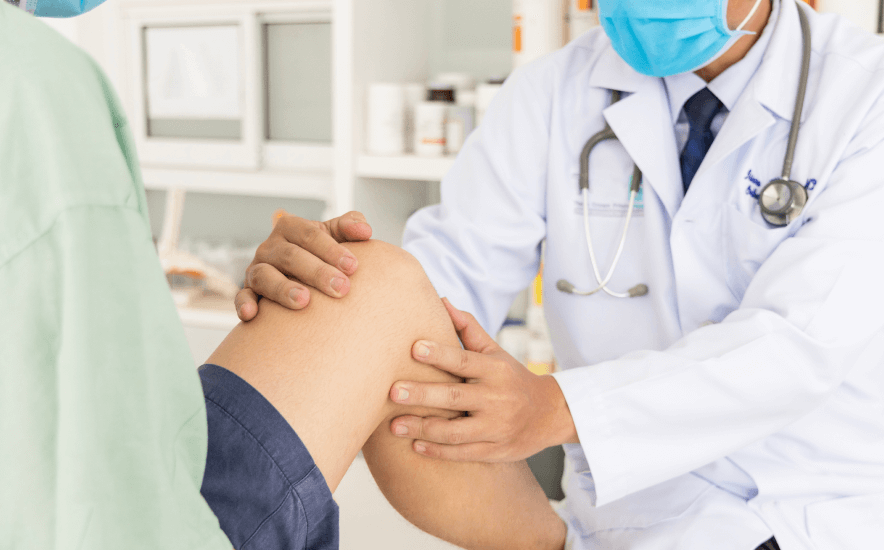What is Peripheral Nerve Stimulation?



Benefits
Targeted Pain Relief
Minimally Invasive Procedure
Reduction in Medications
Reversible & Adjustable
Improved Quality of Life
Effective for Various Conditions
Paresthesia-Free Stimulation
Long-Term Pain Relief
Expanded Guide
Peripheral nerve stimulation (PNS) is an innovative and minimally invasive therapy used to manage chronic pain by targeting specific peripheral nerves outside the brain and spinal cord. It offers a highly focused treatment approach for conditions that affect localized areas of the body, especially when other therapies such as medications, physical therapy, or surgery have not provided sufficient relief. By delivering mild electrical impulses to the targeted nerve, PNS interrupts the transmission of pain signals before they reach the brain, offering a powerful tool for reducing chronic pain in specific regions.
How Peripheral Nerve Stimulation Works
The principle behind peripheral nerve stimulation is relatively straightforward. The body’s peripheral nerves are responsible for transmitting sensory information, including pain, from various areas of the body to the central nervous system. When these nerves become damaged or irritated, they can send exaggerated or constant pain signals to the brain. PNS works by delivering low-level electrical impulses through electrodes placed near the affected nerve. These impulses interfere with the pain signals, either reducing their intensity or preventing them from reaching the brain entirely. The PNS system typically includes a small electrode that is implanted near the targeted nerve, along with a pulse generator that delivers the electrical impulses. The pulse generator can be adjusted and controlled by the patient or physician using an external remote, allowing for personalized pain relief based on the individual’s needs. Like other neuromodulation therapies, PNS begins with a trial phase where temporary electrodes are placed to determine if the therapy is effective before committing to permanent implantation.
Common Peripheral Nerve Targets: Shoulder, Knee, and Low Back
PNS is particularly effective for treating chronic pain that is localized to specific regions of the body. Some of the most common targets for peripheral nerve stimulation are the shoulder, knee, and low back, where chronic pain can arise from injury, surgery, or degenerative conditions.
- Shoulder Pain
Chronic shoulder pain is a common condition, often resulting from rotator cuff injuries, arthritis, or post-surgical complications. Peripheral nerve stimulation can target the suprascapular or axillary nerves, which are responsible for transmitting pain signals from the shoulder to the brain. By delivering electrical impulses to these nerves, PNS can reduce pain and improve shoulder function. This can be particularly beneficial for patients with persistent shoulder pain following surgery or trauma who have not responded to other treatments.
- Knee Pain
Chronic knee pain is often caused by osteoarthritis, ligament injuries, or post-surgical pain, and it can significantly limit mobility and quality of life. PNS offers a non-invasive option for managing knee pain by targeting the femoral and saphenous nerves, which are responsible for sensation in the knee. By stimulating these nerves, PNS can alleviate pain, reduce inflammation, and enhance mobility, making it a valuable option for patients who are not candidates for further surgery or who want to avoid long-term medication use. Studies have shown that PNS can provide significant pain relief for knee osteoarthritis, as well as for pain following total knee replacement surgery.
- Low Back Pain
Low back pain is one of the most common reasons people seek medical care, and it can be difficult to treat effectively, particularly when it becomes chronic. Peripheral nerve stimulation can target specific nerves in the lumbar region, such as the dorsal ramus or the lateral branches of the spinal nerves, which transmit pain signals from the lower back. PNS for low back pain can be especially effective for patients with pain that is localized to a particular area, such as post-surgical pain or pain related to muscle or nerve irritation. Unlike spinal cord stimulation, which treats broader pain patterns, PNS allows for more focused treatment, making it ideal for patients whose pain is concentrated in the lower back.
The Phases of PNS Treatment: Trial and Permanent Implantation
The process of receiving peripheral nerve stimulation typically involves two key phases: the trial phase and the permanent implantation phase.
- Trial Phase
The trial phase is a critical step in determining whether PNS is effective for a particular patient. During this phase, temporary electrodes are placed near the targeted nerve, and the patient is able to control the stimulation level to find an optimal setting for pain relief. This trial usually lasts about a week, during which the patient assesses how much pain relief the therapy provides. If the trial is successful, meaning the patient experiences significant pain reduction (often defined as at least a 50% decrease in pain), they can proceed to permanent implantation.
- Permanent Implantation
If the trial phase is successful, the patient undergoes a procedure to implant the permanent PNS device. The electrodes are implanted near the peripheral nerve, and the pulse generator is placed beneath the skin, often in a discreet location such as the abdomen or lower back. The implanted device is controlled by an external remote, allowing the patient to adjust the stimulation settings based on their pain levels. Once implanted, the device can provide long-term pain relief with minimal maintenance.
Benefits
Peripheral nerve stimulation (PNS) offers several key benefits, making it an effective option for managing chronic pain. One of the primary advantages is its ability to provide targeted pain relief by focusing on specific peripheral nerves responsible for transmitting pain signals. This localized approach is especially beneficial for treating pain in particular areas, such as the limbs, head, or lower back. The procedure itself is minimally invasive, involving only small incisions to place electrodes near the peripheral nerves, which reduces recovery time and carries fewer risks compared to more invasive surgeries. Additionally, PNS can significantly reduce or even eliminate the need for opioid medications, helping patients avoid the side effects and risks of dependency that come with long-term drug use.
Another important feature of PNS is that it is reversible and adjustable. The device can be turned off, adjusted, or removed if needed, allowing for a flexible and non-permanent approach to pain management. Patients who receive PNS often report improvements in their overall quality of life, including better sleep, increased mobility, and the ability to participate in daily activities without being limited by chronic pain. PNS is also effective for a wide range of conditions, such as post-surgical pain, occipital neuralgia, migraine, peripheral neuropathy, and musculoskeletal pain.
Unlike some forms of neuromodulation, PNS can often provide pain relief without the tingling sensation, known as paresthesia, that is sometimes associated with nerve stimulation therapies, making it a more comfortable option for many patients. Moreover, PNS can offer long-term pain relief, especially for individuals who have not found success with other treatments, as it modulates nerve signals directly to provide durable improvements in pain levels. Overall, PNS provides a minimally invasive, reversible, and adjustable solution for chronic pain management while enhancing patients’ quality of life and reducing reliance on medications.
Conclusion
Peripheral nerve stimulation (PNS) is a highly effective, minimally invasive treatment option for chronic pain, especially in localized areas such as the shoulder, knee, and low back. By targeting specific peripheral nerves with electrical impulses, PNS interrupts pain signals and provides significant relief for many patients. With its ability to reduce reliance on medications and improve quality of life, PNS offers a valuable alternative for those who have not found relief through other pain management strategies. The therapy’s two-phase approach, including a trial phase, ensures that patients can experience its benefits before committing to permanent implantation, making it a flexible and patient-centered option for chronic pain management.
Frequently Asked Questions
Have more questions? Schedule a consultation with Dr. Patel to gain additional insights and discuss treatment options. We are committed to advancing your health through patient education and a safe, minimally invasive approach.
Gramercy Center
Take the first step towards a healthier life by scheduling your initial consultation with Dr. Patel. At our clinic, we specialize in minimally invasive procedures that offer faster recovery, improved function, and decreased pain. Our client-centered approach ensures that you receive the highest quality care tailored to your unique needs. We look forward to offering you an exceptional experience.
